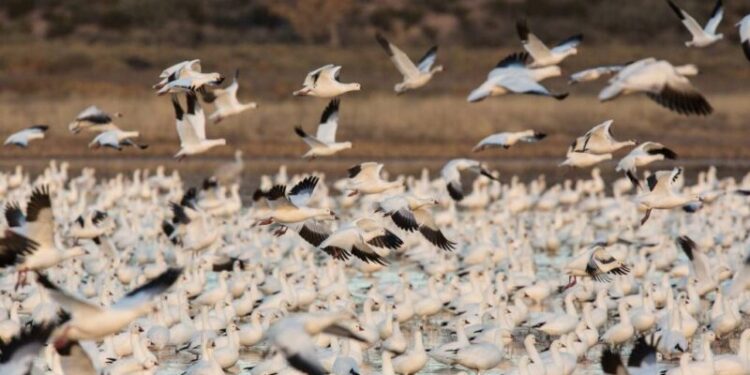This conversation has been lightly edited for length and clarity. You can listen to the full Forum segment.
MINA KIM: One of the things I was really struck by as I was reading your book, and also hearing the examples given to us by listeners, was how many people said that their favorite sounds were made by birds.
But as you remind us in the book, a third of North American songbirds have disappeared in the last half century. And so this is in part what you mean, when you say the diverse sounds of the world are now in crisis?
DAVID GEORGE HASKELL: Birds are a good way into this. Certainly, in my own journey, I started listening to birds and identifying species, and then individuals, and then came to understand all the nuances of the landscape and the seasons through them. Many people have this connection. Birds are very much like us in their sensory systems. They’re acoustic and visual, and listening to them, of course, brings us great joy.
But it also teaches us that we live in an age of diminishment. Listening is a way of discerning that decline. For example, when scientists go out to survey birds, almost 90% — and in tropical areas, it’s more like 99% — of the birds that you would count in your survey you get through your ears, because you’re in, for example, dense forest, where you can’t see the birds.
You’ve said if there’s an acoustic hell, it’s in today’s oceans. Why do you say that?
The oceans live in this place that is beyond our senses. If you’re standing on the ocean shore, you won’t hear it unless it’s very, very loud. Most sound waves that come up from the deep ocean hit the surface and bounce back.
Even when we are close to the ocean, we have a sensory disconnection from what’s happening below the waves. And over the last several decades, shipping noise has vastly increased — [there’s] lots of sonar, particularly from military vessels, and also seismic exploration of the oceans, where air guns are used. They blast off every few seconds, over weeks and months, and turn the ocean into this tumult of sound that is almost unsurpassed in any terrestrial environment.
And the particular problem for ocean creatures is that this isn’t just annoying, or an inconvenience. This destroys their ability to communicate with one another. And sometimes the sound is loud enough that it’s actually destroying them from the inside physiologically, because sound in the ocean flows through the skin into the watery bodies of creatures.
If we care about maintaining and expanding sonic diversity at this stage, where Earth is rapidly changing, what can we do?
There are a number of things we can do. One of the things I tried to do with my students over the years is open our senses to the stories that are present around us every day.
Sound is an invitation into appreciation of the diversity of life, the many voices of other species. It’s also a great teacher about problems of environmental injustice and environmental racism. Why is it that certain neighborhoods and cities have highways routed through them, and are exposed to higher levels of urban noise and traffic noise and air pollution than others? By listening to our own neighborhoods — both for the beauty, but also the brokenness around us — we can get a sense of, “What can my gifts and talents do to mesh with the world to produce productive change in my own community?”
You talk about how sound has the power to evoke memories and emotions, but you also say that sound is generative. Can you explain what you mean by that?
One thing that stunned me while researching for this book: going back in time and realizing how much sonic connection from one creature to another — or from one nonliving entity to another — has been a creative force in biological evolution and cultural change. But also in the makeup of the universe.
The very first sound waves passed through the hot plasma of the universe when it was a compact, blazing little ball of heat. As the universe expanded, the plasma cooled, and those sound waves still run through the universe today as the microwave background radiation that astronomers can pick up with … their instruments. The peaks of those little sound waves became the first clusters of atoms around which the stars and galaxies formed.
The first sound waves of the universe seeded the stars and the galaxies.
Once life evolved on planet Earth, sound became a way for creatures to connect. All sorts of amazing beauty and diversity emerges because of the sonic connection from one being to another.



















